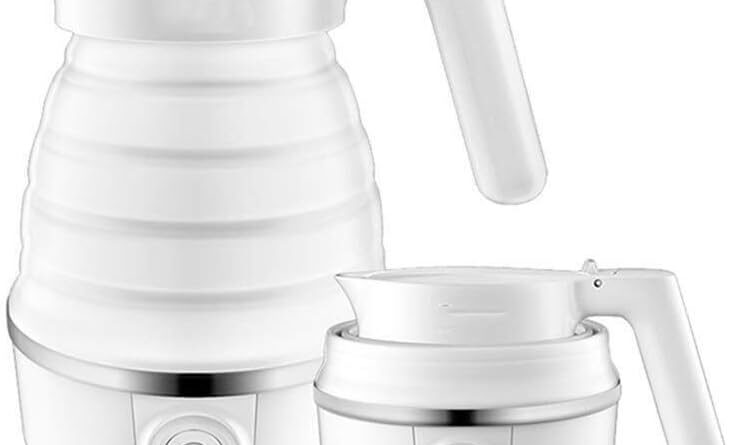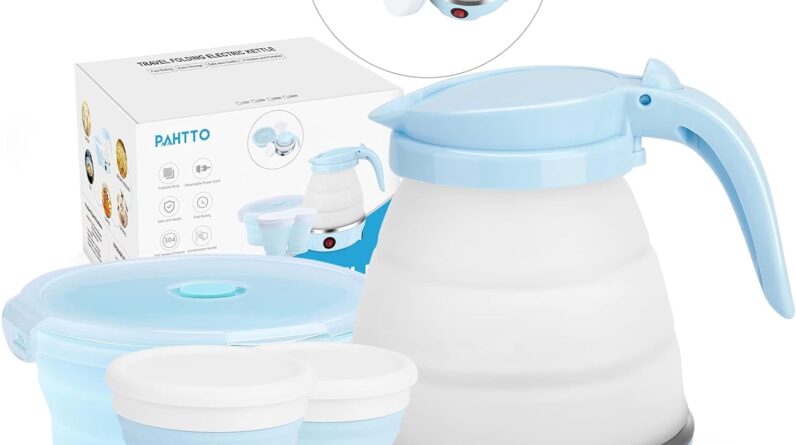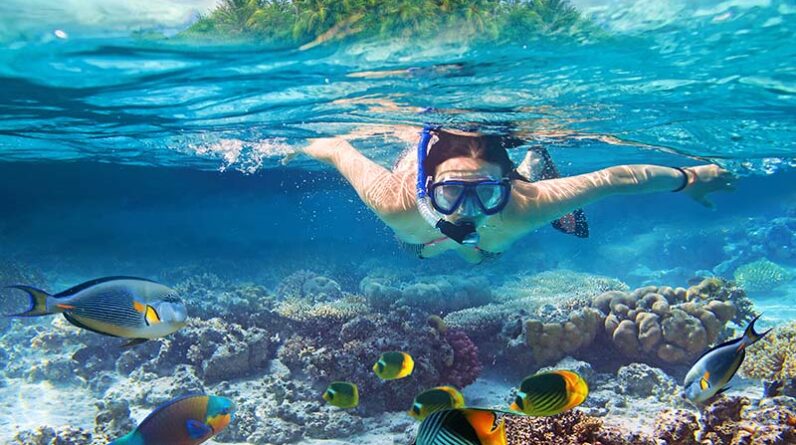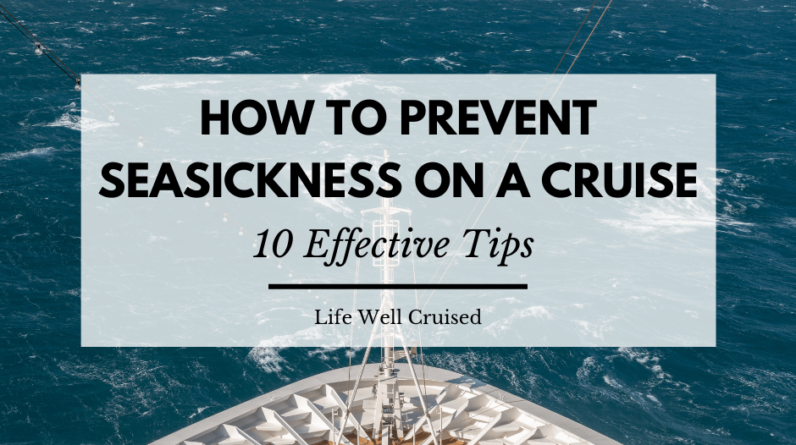
Are you planning a boat trip but worried about getting seasick? Look no further! In this article, we will explore seven effective ways to prevent and treat seasickness while on a boat. Whether you’re a seasoned sailor or a first-time adventurer, these tips will help you enjoy your time on the water without the discomfort and nausea that often come with motion sickness. So, grab a life jacket and let’s set sail on a journey to a seasickness-free experience!
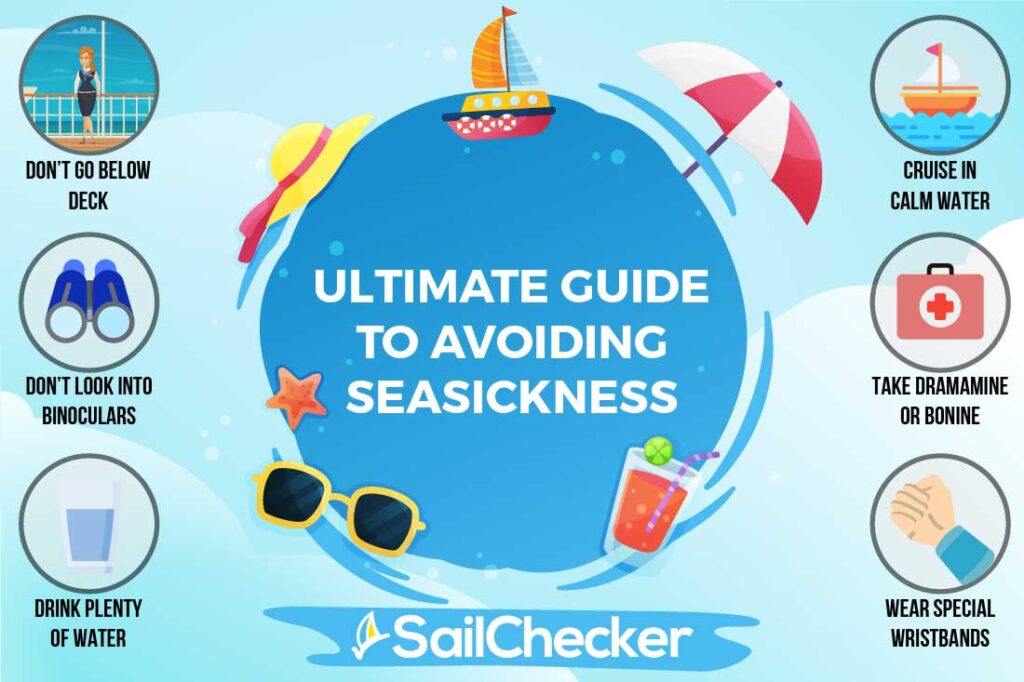
This image is property of sailchecker.com.
Wear specialized wristbands
Acupressure wristbands
Acupressure wristbands are a popular choice for preventing and treating seasickness. These bands work by applying pressure to certain points on your wrists, known as acupressure points, which can help alleviate nausea and dizziness. They are easy to use and can be worn throughout your boat trip.
To use acupressure wristbands, simply slip them onto your wrists and adjust them so that the plastic button is positioned over the Nei-Kuan point. This pressure point is located about three finger-widths below the crease of your wrist. The bands should fit snugly but not be too tight, as you want them to stimulate the acupressure point without causing discomfort.
Sea-Bands
Similar to acupressure wristbands, Sea-Bands are another effective option for preventing seasickness. These bands use the principles of acupressure to relieve nausea and motion sickness. They are designed with a plastic button that applies pressure to the Nei-Kuan point on your wrists.
Sea-Bands are simple to use. Just like acupressure wristbands, slide them onto your wrists and adjust them so that the plastic button is positioned over the correct pressure point. You can wear them for as long as needed and adjust the tightness to your comfort level. Many people find Sea-Bands to be a convenient and drug-free solution for seasickness.
Psi-Bands
Psi-Bands are another type of acupressure wristbands that can help prevent seasickness. Like their counterparts, Psi-Bands target the Nei-Kuan pressure point on the wrist to relieve motion sickness symptoms. These bands are designed with a plastic stud that applies gentle pressure to the acupressure point.
To use Psi-Bands, put them on your wrists with the plastic stud positioned over the Nei-Kuan point. Adjust the bands for a comfortable fit, ensuring that they are snug but not too tight. Psi-Bands are discreet and can be worn under clothing, making them a convenient option for those who want to prevent seasickness without drawing attention to it.
Use medication
Prescription medications
If wristbands alone are not enough to prevent or treat your seasickness, you may consider prescription medications. These medications can be prescribed by a healthcare professional and are designed to alleviate the symptoms of motion sickness.
Common prescription medications for seasickness include antihistamines and scopolamine patches. Antihistamines, such as dimenhydrinate or meclizine, can help reduce nausea and dizziness. Scopolamine patches, on the other hand, are applied behind the ear and slowly release medication to prevent seasickness for up to 72 hours.
It is important to consult with a healthcare professional before taking any prescription medications to ensure they are safe and suitable for you. They will be able to assess your individual needs and help determine the right medication and dosage for your seasickness.
Over-the-counter medications
If you prefer to try over-the-counter options, there are several medications available to help prevent seasickness. These medications can be purchased without a prescription at most pharmacies or drugstores.
Antihistamines, such as dimenhydrinate or diphenhydramine, are commonly available over-the-counter options for treating motion sickness. These medications work by blocking certain chemicals in your brain that cause nausea and vomiting.
Before taking any over-the-counter medication, be sure to read and follow the instructions carefully. Some medications may cause drowsiness or interact with other medications you may be taking. If you have any concerns or questions, it is always best to consult with a pharmacist.
Natural remedies
If you prefer to avoid medications altogether, there are several natural remedies that may help alleviate seasickness symptoms. While the effectiveness of these remedies may vary from person to person, they are worth considering if you are looking for drug-free options.
Ginger is a well-known natural remedy for nausea and can be taken in different forms. Ginger capsules, ginger tea, or even chewing on raw ginger root can help reduce nausea and settle your stomach. Peppermint is another natural remedy that can be helpful for soothing an upset stomach. Peppermint tea or candies can be taken before or during your boat trip to potentially alleviate seasickness symptoms.
It is important to note that natural remedies may not work for everyone and their effectiveness may vary. If you are unsure about using natural remedies or have any underlying health conditions, it is recommended to consult with a healthcare professional.
Choose the right seat
Stay in the middle
Choosing the right seat can significantly reduce the chances of experiencing seasickness. When on a boat, try to sit in the middle of the vessel where the rocking motion is less pronounced. The middle area tends to have less movement and provides a more stable environment for your body.
If you have the option, choose a seat in the center of the boat, facing forward. This position allows you to stay balanced and maintain a steady view of the horizon, which can help reduce the mismatch between what your eyes see and what your body feels.
Opt for the front or rear
If sitting in the middle is not possible or comfortable for you, another option is to choose a seat at either the front or rear of the boat. These positions tend to experience less rocking motion compared to the sides of the vessel.
When sitting in the front or rear, try to be near windows if possible. Having a view of the outside can help your brain better understand the motion and reduce the risk of feeling seasick.
Avoid looking down
While on a boat, it is advisable to avoid looking down or focusing on nearby objects, especially if you start feeling seasick. Looking at objects that are stationary or closer to the boat can increase the mismatch between what your eyes see and what your body feels, exacerbating symptoms of motion sickness.
Instead, focus your gaze on the horizon. By fixating your vision on a stable and distant point, such as the horizon line where the sky meets the water, you can help reorient your senses and reduce the discomfort of seasickness.
Fix your gaze
Look at a stable object
When experiencing seasickness, fixing your gaze on a stable object can help alleviate symptoms. Look for objects or landmarks on the boat that are not moving, such as the railing or a stationary furniture piece. Directing your attention to these stable points can provide a sense of visual stability and help reorient your senses.
If you are easily prone to seasickness, it may be helpful to identify these stable objects in advance and make a conscious effort to focus on them during your boat trip.
Focus on the horizon
One effective way to combat seasickness is to focus your gaze on the horizon. By looking at the horizon line where the sky meets the water, you give your brain a stable reference point to rely on.
Maintaining a steady focus on the horizon can help synchronize the information your eyes receive with the motion your body senses, reducing the sensory conflict that leads to seasickness. As you gaze at the horizon, try to keep your head steady and avoid rapid head movements.
Stand up and face the waves
If you are comfortable doing so, standing up and facing the waves can help alleviate seasickness. By directly facing the direction of the waves, you can experience the rocking motion more predictably, which may help your body adjust and minimize symptoms of motion sickness.
When standing, try to find a stable position by planting your feet firmly on the ground and holding onto a handrail or sturdy object for support. Keep your gaze directed outward and avoid looking down at your feet or the boat’s motion.
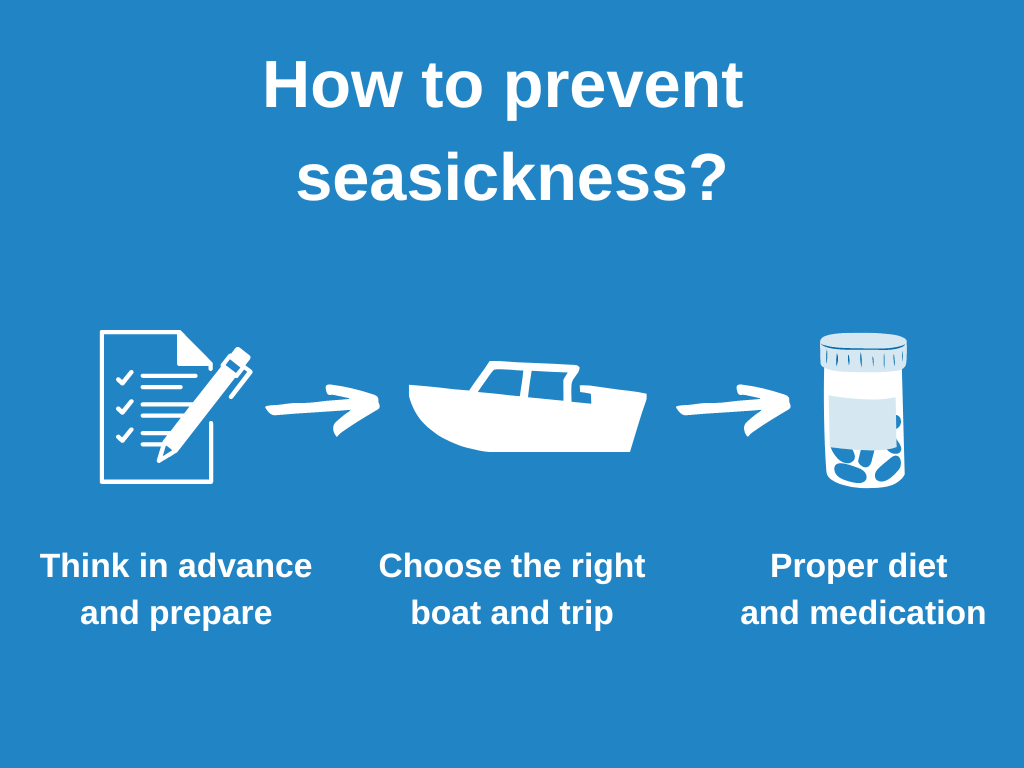
This image is property of fishingbooker.com.
Control your breathing
Practice deep breathing techniques
Managing your breathing can play a crucial role in preventing and reducing seasickness symptoms. Deep breathing techniques, such as diaphragmatic breathing, can help relax your body and calm your mind.
To practice deep breathing, sit or stand in a comfortable position and take a slow, deep breath in through your nose. As you inhale, allow your diaphragm to expand and fill your lungs completely. Slowly exhale through your mouth, releasing any tension or stress.
Repeat this process several times, focusing on the rhythm of your breath. Deep breathing can promote a sense of relaxation and help reduce feelings of nausea and dizziness.
Try diaphragmatic breathing
Diaphragmatic breathing, also known as belly breathing, is a technique that involves engaging your diaphragm to take slow, deep breaths. This type of breathing can help regulate your body’s response to stress and motion.
To practice diaphragmatic breathing, place one hand on your abdomen, just below your ribcage. Take a deep breath in through your nose, allowing your belly to extend outward. As you exhale through your mouth, feel your belly contract and gently draw inward.
Focus on making your breaths slow and controlled, emphasizing the movement of your diaphragm. Diaphragmatic breathing can help relax your body and alleviate symptoms of motion sickness.
Use aromatherapy
Aromatherapy, the use of essential oils for therapeutic purposes, can be a helpful addition to your seasickness prevention toolkit. Certain essential oils, such as peppermint or ginger, are known for their calming and anti-nausea properties.
To use aromatherapy for seasickness, you can either inhale the scent directly from the bottle or use a diffuser. Alternatively, you can dilute a few drops of essential oil in a carrier oil, such as coconut oil, and apply it to your wrists or temples.
It is important to choose high-quality essential oils and be mindful of any potential allergies or sensitivities. If you are unsure about using aromatherapy, consult with an aromatherapist or healthcare professional for personalized advice.
Stay hydrated
Drink plenty of water
Staying hydrated is crucial to prevent and alleviate seasickness symptoms. Dehydration can exacerbate feelings of nausea and dizziness, making seasickness even more uncomfortable. Therefore, it is essential to drink plenty of water throughout your boat trip.
Bring a reusable water bottle with you and make a conscious effort to drink at regular intervals. Sipping water throughout the day can maintain your hydration levels and help counteract the effects of motion sickness.
Avoid alcohol and caffeine
While it may be tempting to indulge in alcoholic beverages or caffeinated drinks during your boat trip, it is advisable to avoid them if you are prone to seasickness. Alcohol and caffeine can dehydrate your body and worsen symptoms of motion sickness.
Both alcohol and caffeine can have a diuretic effect on your body, leading to increased urination and fluid loss. This can result in dehydration and intensify feelings of nausea and dizziness. It is best to opt for non-alcoholic and caffeine-free beverages to stay hydrated and reduce the risk of seasickness.
Suck on ice chips or ginger candies
In addition to staying hydrated with water, sucking on ice chips or ginger candies can provide relief from seasickness. Ice chips help keep your mouth moist, which can alleviate the sensation of dryness and discomfort commonly associated with nausea.
Ginger candies, specifically those made with real ginger, can also help calm your stomach and reduce nausea. Ginger has long been used as a natural remedy for digestive issues and is known for its soothing properties. Keep a stash of ginger candies on hand and enjoy one when you start feeling seasick.

This image is property of www.formulaboats.com.
Eat light, bland foods
Avoid consuming heavy meals
When it comes to meals on a boat trip, it is best to avoid consuming heavy or greasy foods. These types of meals can sit heavily in your stomach and increase the likelihood of experiencing seasickness.
Instead, opt for light and easily digestible meals. Choose foods that are low in fat and fiber, such as plain rice, crackers, or boiled potatoes. These foods are gentle on your stomach and provide essential nutrients without overwhelming your digestive system.
Choose foods low in fat and fiber
Foods that are low in fat and fiber are generally easier to digest and less likely to cause discomfort or exacerbate seasickness symptoms. This is especially important when you are on a boat and may already be more prone to digestive disturbances.
Select foods like grilled chicken, steamed vegetables, or plain pasta. These options provide essential nutrients while being gentle on your stomach. Avoid foods that are fried, heavily seasoned, or high in spices, as they can exacerbate feelings of nausea and make seasickness worse.
Consider ginger or peppermint
Incorporating ginger or peppermint into your meals or snacks can provide additional support in preventing seasickness. Both ginger and peppermint have been shown to have calming effects on the stomach and can help alleviate nausea.
Consider adding fresh ginger to your meals, such as grated ginger in soups or stir-fries. You can also enjoy ginger tea as a soothing beverage. Peppermint can be included in your diet through peppermint tea, mint-infused water, or even peppermint-flavored snacks.
These natural flavors can provide a refreshing and comforting element to your meals while potentially reducing the risk of seasickness.
Get fresh air
Stay on the deck
If weather conditions permit, spending time on the deck of the boat can help alleviate seasickness. Fresh air and the open space can provide a sense of relief and help your body adjust to the motion of the boat.
Find a comfortable spot on the deck, preferably with a good view of the horizon. Staying outside allows you to better synchronize the information your eyes receive with the motion your body senses, reducing the sensory conflict that leads to seasickness.
Keep windows open
If going outside is not an option or if the weather does not permit, make sure to keep windows open in the cabin. Letting fresh air circulate can help prevent a stuffy atmosphere and provide ventilation, which may reduce the risk of feeling seasick.
Keeping the windows open can also help you maintain a connection with the outside environment, allowing your senses to better adjust to the boat’s motion. If there are no windows in the cabin, consider other methods of keeping the space well-ventilated, such as using fans or air vents.
Avoid enclosed spaces
Enclosed spaces, such as small cabins or rooms without windows, can exacerbate feelings of seasickness. These spaces can feel stuffy and confined, increasing the chances of experiencing motion sickness.
If possible, choose a seating area or cabin with adequate space and ventilation. Avoid staying in cramped areas for an extended period and try to find places on the boat where you feel more comfortable and connected to the outside environment.
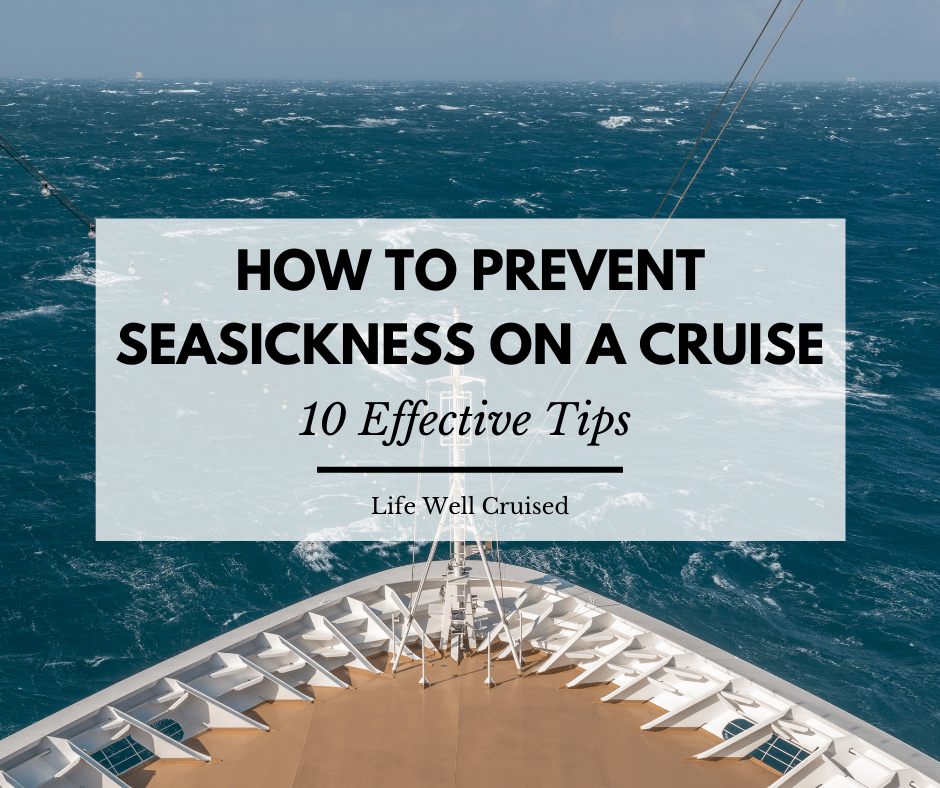
This image is property of lifewellcruised.com.
Avoid strong smells
Avoid strong-smelling perfumes or colognes
Strong smells, especially those from perfumes or colognes, can trigger or intensify feelings of nausea. In an enclosed space like a boat, these smells can be overpowering and contribute to seasickness.
If you are prone to motion sickness, it is best to avoid wearing or being exposed to strong-smelling perfumes or colognes. Opt for unscented or lightly scented products to minimize the risk of triggering your seasickness symptoms or making them worse.
Stay away from the galley
The galley, or the boat’s kitchen area, can often be a source of strong smells and odors. These smells can be particularly challenging for individuals who are prone to seasickness.
To minimize exposure to strong smells, try to avoid spending too much time in or near the galley. If you need to access the galley for food or other necessities, try to do so quickly and efficiently. Keeping your distance from strong odors can help reduce the risk of feeling seasick.
Keep the boat well ventilated
Proper ventilation is key to preventing and mitigating the impact of strong smells on your seasickness. Ensuring that the boat is well ventilated can help dissipate any unpleasant odors and maintain a fresh environment.
Open windows, use fans, or find other ways to encourage air circulation throughout the boat. By improving the air quality and reducing the concentration of smells, you can minimize the chances of feeling seasick.
Stay distracted
Engage in conversation
One effective way to distract yourself from feelings of seasickness is to engage in conversation with others on the boat. Talking with friends or family members can divert your attention away from any discomfort you may be experiencing.
Engaging in conversation can also help normalize your experience and provide emotional support. Sharing stories, thoughts, and laughter can contribute to an overall positive mood and reduce the focus on seasickness symptoms.
Listen to music or podcasts
Listening to music or podcasts can be a great way to keep your mind occupied while on a boat trip. Choose your favorite songs or podcasts that you enjoy and create a playlist specifically for your journey.
Music can have a calming and uplifting effect, while podcasts can capture your attention and provide intellectual stimulation. By immersing yourself in the sounds and stories, you can divert your focus away from any seasickness symptoms you may be experiencing.
Distract yourself with activities
Engaging in activities can help take your mind off seasickness and provide a sense of enjoyment or accomplishment. Bring along books, puzzles, or handheld games that you find enjoyable and distracting.
Reading a good book, solving puzzles, or playing games can keep your mind occupied and lessen the impact of motion sickness. Choose activities that you find engaging but not overly stimulating, as excessive physical or mental exertion can exacerbate symptoms. Finding the right balance is key to successfully distracting yourself from seasickness.
In conclusion, preventing and treating seasickness on a boat can be achieved through various methods and techniques. Wearing specialized wristbands that target acupressure points, using medication when necessary, choosing the right seat to minimize motion, fixing your gaze on stable objects or the horizon, controlling your breathing through deep breathing and aromatherapy, staying hydrated, eating light and bland foods, getting fresh air, avoiding strong smells, and staying distracted with activities are all effective ways to prevent seasickness. By implementing these strategies and finding what works best for you, you can enjoy your boat trip without the discomfort of seasickness.
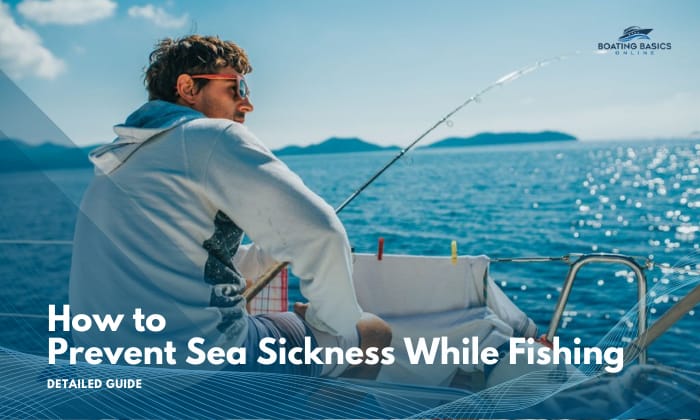
This image is property of www.boatingbasicsonline.com.


